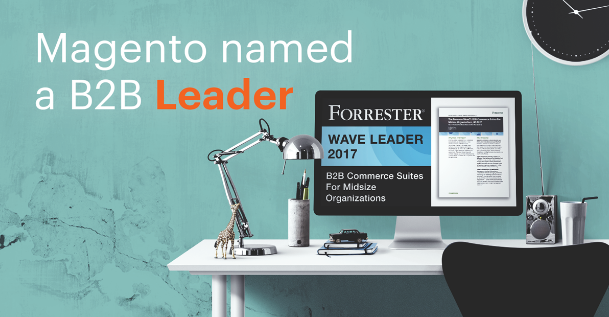
Connecting Your Warehouse to Your Storefront: Integrating Magento with an ERP

Many merchants migrating to Magento 2 from Magento 1 or from other platforms are faced with the challenge of how to integrate their back office and warehouse enterprise resource planning (ERP) data with their Magento storefront.
Jump To:
The data that most often needs to be integrated is orders, customer catalog and product catalog. Orders must flow from the storefront of Magento down to the ERP for processing. Tracking number information must then flow back from the ERP to Magento. Inventory and pricing information must be kept in sync between Magento and the ERP as well.
Several options exist for building the integrations described above between Magento and an ERP including, Pre-built Middleware, Pre-built Magento Extension, and Custom Development.
Pre-built Middleware
If a merchant is using a popular ERP software like SAP, Netsuite, Microsoft Dynamics (GP, NAV and SL), Epicor, Sage or JD Edwards, there are middleware products available in the marketplace that provide most of the basic integration requirements. These services typically charge a setup fee plus monthly fees based on usage volume or levels of support.
The middleware product offerings have grown substantially in the last 5 years and are now so robust that many times they can handle all of the integration requirements for small to midsize merchants. The market leader in this category is eBridge Connections. They provide connection to Magento and other ecommerce platforms from almost all of the popular ERP software packages.
+ Advantages of using middleware:
- Quick Setup – setup time is usually between 4-6 weeks.
- Good Quality – when the connections have already been installed many times.
- Lower Costs – using a shared connection can lower costs.
- Quality Support – many times support staff is available 24/7 to resolve any reported issues.
– Disadvantages of using middleware:
- Flexibility – this is typically the biggest downside. Many times there are features that cannot be provided to suit specific business needs because the connector must work in a certain fashion to serve all and cannot be customized in any major ways.
- Not As Robust – prebuilt solutions typically come with a standard feature set that covers basic integration needs. However, more advanced connection points like gift cards, rewards points can be lacking.
Pre-built Magento Extension
Because of the issues mentioned below, we recommend a high degree of caution and vetting before using a pre-built Magento extension from the marketplace for integration. While some of our merchant clients have benefited greatly from a low cost extension integration to MOM and Quickbooks, we’ve also had clients suffer costly issues with other extension integrations to Microsoft GP and like systems.
The middleware product offerings have grown substantially in the last 5 years and are now so robust that many times they can handle all of the integration requirements for small to midsize merchants. The market leader in this category is eBridge Connections. They provide connection to Magento and other ecommerce platforms from almost all of the popular ERP software packages.
+ Advantages of using Magento extension:
- Low Cost – you purchase the extension once, no monthly fees.
- Value – if coded correctly you can get a lot of features for the cost compared to custom development.
– Disadvantages of Magento Extensions:
- Support – often times it takes days for the extension providers to respond to support requests via tickets or emails.
- Low Quality – there are some really awful integration extensions for sale that were of alpha release quality.
- Costs – a low quality extension can actually create a lot of cost because of customer service issues, bad data and Magento developer time needed to manage and fix urgent issues.
Custom Development
Many legacy ERPs don’t have pre-built solutions or APIs and thus can only be connected through flat file FTP integrations. Or many times pre-built solutions do not contain the features and work flows needed to support the integration business requirements. In these situations custom development is needed to connect Magento to an ERP.
With this option merchants typically have the choice of developing code on the Magento side that interacts with the ERP or developing code on the ERP side that interacts with Magento’s APIs.
We are often tasked with developing code on the Magento side that interfaces with an ERP’s API or flat file requirements. This custom code can be in addition a pre-built middleware or extensions or it can stand alone as the entire integration.
+ Advantages of Custom ERP Development
- Robust Features – features developed specifically to meet business requirements.
- High Quality – since it can be controlled tightly from the beginning of the project
- Efficient Code – because it only needs to support the specific needs of the client.
- High ROI – the custom integration can be constantly improved over time to reduce manual labor and improve efficiency of backend operations.
– Disadvantages of Custom ERP Development
- Costs – Because the integration is being custom developed there is no cost saving advantage of reusing code from other integration projects.
In Summary:
There are many things to consider when planning to integrate Magento to your back office systems (ERP) but one should always step back and consider the long term cost of ownership and potential return on investment. While pre-built solutions are always good to initially consider, it may be that a combination of pre-built and custom development or solely custom development of an integration will provide the best return on investment over time. Check out the ERP work we did for Aladdin Temp-Rite.
James Benton ,
InteractOne Solution Expert













